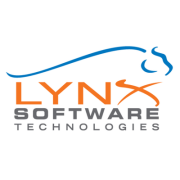IoT Security focuses on safeguarding connected devices and networks in the Internet of Things ecosystem from threats and vulnerabilities. Effective IoT Security solutions are crucial to protect data integrity and ensure seamless operation.
Advanced IoT Security solutions offer comprehensive protection for interconnected devices, addressing diverse challenges. With the increase in smart devices, businesses face risks from malicious activities. Leading solutions provide enhanced threat detection and response, ensuring data remains secure across all platforms. Integration capabilities simplify deployment, while analytics offer valuable insights into device performance and security status.
What are the critical features of IoT Security solutions?In industries like healthcare, IoT Security safeguards patient data and ensures the reliability of medical devices. In manufacturing, it protects critical operational technology from cyber threats. Retailers use IoT Security to secure payment information and increase trust with consumers.
Organizations benefit from IoT Security by minimizing risks associated with connected devices, ensuring data protection, and enhancing operational integrity. This leads to improved stakeholder confidence and secure business operations in the digital age.





































IoT Security solutions employ various technologies to safeguard your business's IoT devices and data from cyber threats. They provide encryption, device authentication, and network security controls to prevent unauthorized access and data breaches. By continuously monitoring for anomalies and employing machine learning, these solutions can detect and respond to potential threats in real-time, ensuring your IoT ecosystem remains secure.
What are the best practices for implementing IoT Security solutions?When implementing IoT Security solutions, it is essential to start with a comprehensive risk assessment to identify potential vulnerabilities. Deploy strong encryption protocols and regularly update device firmware to patch security flaws. Implement network segmentation to isolate IoT devices and use multi-factor authentication to strengthen access control. Conduct routine security audits and ensure employees are trained on cybersecurity practices to maintain a robust security posture.
What role does encryption play in IoT Security?Encryption is a critical component of IoT Security, as it protects data both at rest and in transit by converting it into a secure format that unauthorized users cannot read. By encrypting data, you can prevent hackers from accessing sensitive information even if they intercept it. It is crucial to use strong encryption standards, regularly update encryption keys, and ensure that all IoT devices support encryption protocols to maximize security.
How can businesses ensure IoT device compliance with security standards?Ensuring IoT device compliance involves adhering to industry standards and regulations such as GDPR or NIST guidelines. Businesses should work closely with IoT device manufacturers to verify devices meet these standards. Implementing a comprehensive security policy and conducting regular compliance audits can help maintain adherence. Leveraging third-party IoT Security solutions with built-in compliance checks can simplify the process and enhance your security posture.
What are the common challenges faced in securing IoT devices?Common challenges in securing IoT devices include limited device resources, which can restrict the implementation of robust security features. The heterogeneity of IoT devices makes it difficult to apply a one-size-fits-all security approach. Rapid device proliferation increases the attack surface, while the lack of standardization complicates integration efforts. To address these challenges, businesses must adopt flexible, scalable, and comprehensive IoT Security solutions tailored to their specific needs.